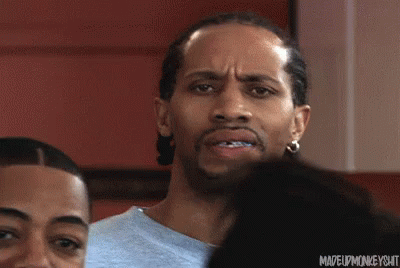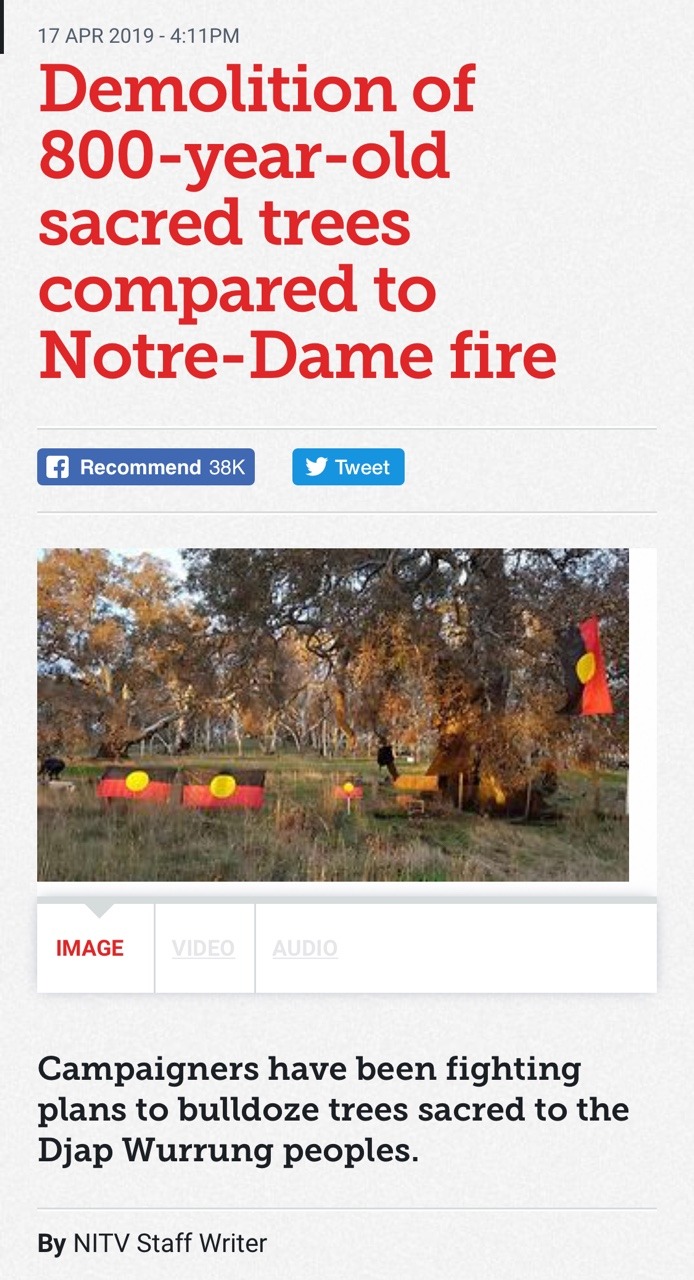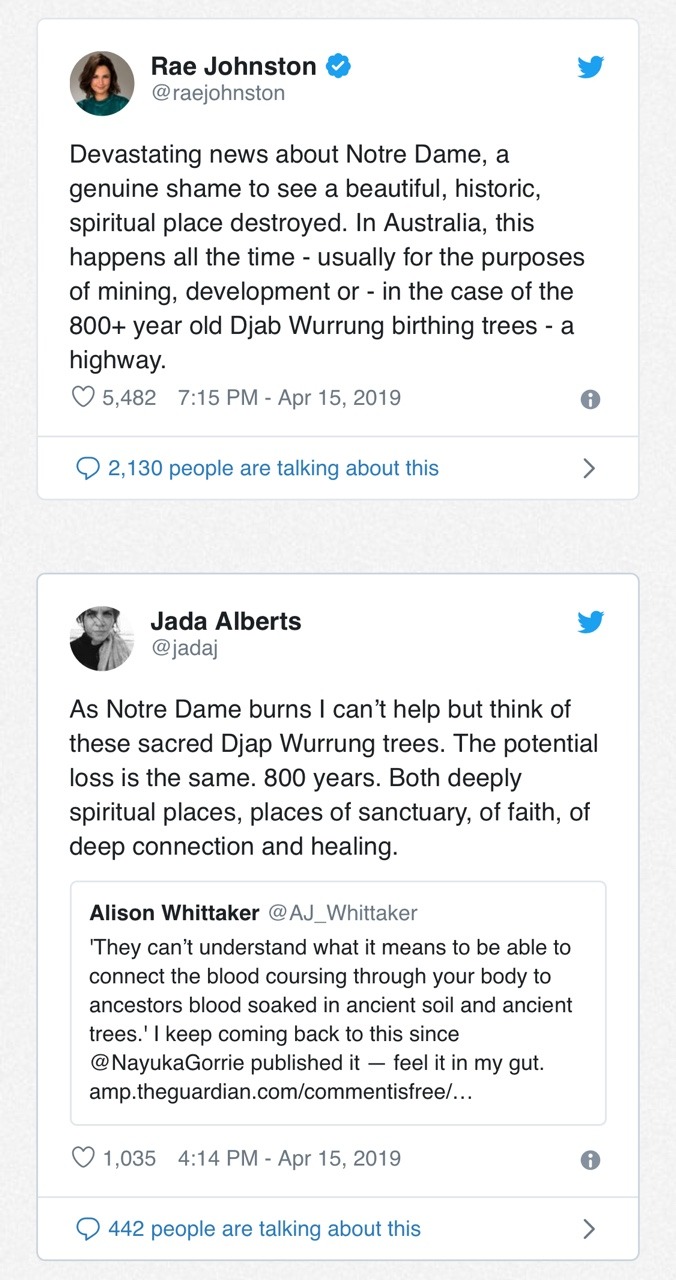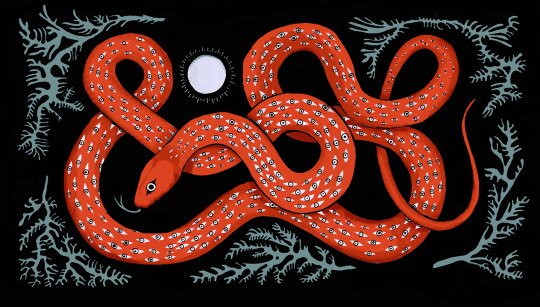Don't wanna be here? Send us removal request.
Photo



Anti-colonial posters seen around Melbourne
11K notes
·
View notes
Video
vimeo
The Bowraville Murders Documentary
The Bowraville Murders investigates one of Australia’s worst unsolved murder cases that has been marred by systemic racism – the 1990-91 serial killings of three Aboriginal children, all from the same street in a rural town in NSW, all killed within five months of each other and all of their remains found off the same dirt track. There has always been only one suspect, a white man who was acquitted of two of the murders after a racially biased police investigation. For 30 years, the victims’ families have fought a courageous battle for justice that is now being passed to the next generation.
Over three years, we have followed the families’ emotional journey through the courts along with the dogged cop who reinvestigated the murders and an activist MP who led a Parliamentary inquiry. As a result of their fight, Bowraville has become a rallying cry for Indigenous people everywhere who demand equal treatment under the law – an open wound haunting Australia until justice is done.
Crew
DIRECTOR: Allan Clarke
PRODUCER: Dan Goldberg & Stefan Moore
Synopsis
DURATION: 80 MINUTES
[Documentary Australia website]
[Instagram]
13 notes
·
View notes
Photo





We have been closely watching the scenes in America this last week, and have been moved by the masses of people across the world enraged by the murder of George Floyd. It is important to remember that similar injustice has happened across this nation and continues to happen year on year. If you don’t know about the racism First Nations people face across this country each day please take time to better understand this, through educating yourself and becoming familiar with the history of Aboriginal deaths in custody. Since the Royal Commission into Aboriginal deaths in custody in 1991, there have been 432 First Nations deaths in custody. The Guardian Australia’s ‘deaths inside’ research project has combined all data publicly available to provide a comprehensive understanding of the facts available and showcase trends over time. The Guardian have found that the extent of police brutality towards First Nations people is increasing year on year. We’ve linked the Guardian resource to this post in our bio so you can check it out for yourself. If you are enraged and you need guidance around what you can do about this, swipe through this short graphic for a list of ways you can contribute to dismantling structural racism through educating yourself, listening deeply, being actively anti-racist, making space for First Nations voices, supporting First Nations grassroots organisations, showing up in protest and working to dismantle systems.
621 notes
·
View notes
Text
6 notes
·
View notes
Photo

The practice of removing mixed race Aboriginal/European children from their families was advocated at the time as part of a plan to “breed out the colour”[3] by having those children brought up as though they were white, with the idea that they would marry people with light and lighter skin tones over successive generations, until there would be no Aborigines in Australia at all.[4] At the time it was believed that full-blood Aborigines were dying out.[5] In 1934, the WA government set up the Moseley Royal Commission, to examine the state of Aboriginal people with regard to the role of Chief Protector. The result was that the Chief Protector was given more authority over the lives of Western Australian Aboriginal people which, some say, only increased their suffering. In 1937, Neville declared:
Are we going to have one million blacks in the Commonwealth or are we going to merge them into our white community and eventually forget that there were any Aborigines in Australia?[6]
Neville believed that biological absorption was the key to ‘uplifting the Native race.’[7] Speaking at the Moseley Royal Commission, he defended the policies of forced settlement, removing children from parents, surveillance, discipline and punishment, arguing that:
“[T]hey have to be protected against themselves whether they like it or not. They cannot remain as they are. The sore spot requires the application of the surgeon’s knife for the good of the patient, and probably against the patient’s will.”[7]
Neville stated that children had not been removed indiscriminately, saying that:
“[T]he children who have been removed as wards of the Chief Protector have been removed because I desired to be satisfied that the conditions surrounding their upbringing were satisfactory, which they certainly were not.”[7]
7 notes
·
View notes
Text
0 notes
Text
“As early as the 1920s, researchers giving IQ tests to non-Westerners realized that any test of intelligence is strongly, if subtly, imbued with cultural biases… Samoans, when given a test requiring them to trace a route form point A to point B, often chose not the most direct route (the “correct” answer), but rather the most aesthetically pleasing one. Australian aborigines find it difficult to understand why a friend would ask them to solve a difficult puzzle and not help them with it. Indeed, the assumption that one must provide answers alone, without assistance from those who are older and wiser, is a statement about the culture-bound view of intelligence. Certainly the smartest thing to do, when face with a difficult problem, is to seek the advice of more experienced relatives and friends!”
— Jonathan Marks - Anthropology and the Bell Curve (via mgrable)
169K notes
·
View notes
Text
PSA
You know what bothers me the most about how little coverage the Australian fires are getting?
I could mention that 18 people are now dead, several are missing and over 1000 homes are lost. All at the start of a new year. +3 million hectares of land is gone. People feel a little bit of empathy, maybe they'll reblog this or give it a like, but they'll give it no second thought.
But if I were to make a post just solely about the fact that 500 million animals have been killed in these fires, including 30% of all koalas meaning they're close to being functionally extinct, people would share the fuck out of it. They would start GoFundMe pages, they would guilt people into reblogging shit with the classic, "if you don't reblog this you don't have a heart." You know that trope yeah?
You all fucking shoved posts about the Amazon fires down our throats. "Oh but they were deliberately lit on Native land." You don't think we understand that? Do you know that is exactly what's happened here? As a woman of Aboriginal descent, do you get how upsetting it is for me to watch my country burn? To watch my friends houses burn to the grown whilst they're left to flee to the beach in hope's of not being burnt? Do you know how upsetting it is to think that the house that I grew up in probably won't be standing in a couple days? All because the RFS are not allowed to backburn because of politics. Politics who don't understand a single fuck about anything that is happening.
Every night I have to try my hardest not to break down in front of my family because I am so upset and so angry about this whole situation. Men and women are out there fighting this fire, missing out on time with their family, time at work meaning they can't afford to feed their family either, they miss out on holidays too.
My brother was sent on a strike team up to Sydney for Christmas. He almost didn't make it back for New Years, even when he got home, he was so tired to go out so him and I stayed at home and played the PS4. And what makes me angry is that some families out there don't see their brothers come home, their sons, their fathers, their sisters, mothers, daughters.
Because people are dying.
And no one other than Australians give a single fuck!
Canberra currently ranks at number 8 for worst air quality in the world right now. The elderly in nursing homes are being evacuated and have nowhere to go. People were jumping in lakes, were swimming out into the ocean to get away from the fire as it started to burn the beach.
And what does our Prime Minister do?
He arrives at fire impacted towns, in a nice and expensive 100k BMW, to give his thoughts and prayers. Not aid, not water and food, not money. But thoughts and prayers.
"I'm sure he's just tired."
"No, no. He lost a house."
"Oh."
How more insensitive can the fucker get? This isn't a Prime Minister. This is a disgrace. May I also mention we are in our worst drought yet but "we" just sold 409 million dollars worth of drinking water overseas.
I am begging all of you by this point. Please, help out our victims of fire and drought. Donate to whatever causes you can, search the internet, I'm sure there are plenty out there. Donate packs of water, toiletries, food that doesn't spoil, socks, sleeping bags, anything.
Every small gesture you do makes a big impact on somebody who lost everything.
20K notes
·
View notes
Photo

Uluru has finally officially closed to climbers!
The climb was closed permanently at 4pm ACST and any remaining visitors on the rock are allowed to stay until sunset. They’re the last people allowed on the rock. From this point on it’s now illegal and anyone who tries can be fined up to $10,000 for disrespecting the culturally significant site of the Anangu people.
Finally. In recent months the news that the site will be closed out of respect to the Aboriginal people a bunch of tourists thought “oh good, a last minute opportunity to disrespect that” and have inundated the area with illegal camping, trash, and property damage. Over the years many people have taken chunks off Uluru as souvenirs.
Now tourists can focus on immersing themselves in the cultural activities in the park and learning about the people of the area. Plus: from a distance you can get the iconic image of Uluru that has been seen the world over.
32K notes
·
View notes
Link
Any help would be greatly appreciated as this is my only source of income at the moment.
7 notes
·
View notes
Text
me hanging out with black people in the summer: “aye, yall don’t forget to put on sunscreen”
them:

209K notes
·
View notes
Photo






Danzal Baker, known professionally as Baker Boy, is the recipient of Young Australian of the Year, 2019. He comes from Milingimbi Island, Arnhem Land. He is an Aboriginal musician, dancer, artist, and actor who incorporates both Yolŋu Matha and English in his lyrics. Baker Boy gained national recognition in 2017 as winner of the Triple J Unearthed National Indigenous Music Awards Competition. He has since performed with artists such as Yothu Yindi, Dizzee Rascal, and 50 Cent.
240 notes
·
View notes
Text


https://www.sbs.com.au/nitv/nitv-news/article/2019/04/17/demolition-800-year-old-sacred-trees-compared-notre-dame-fire
61K notes
·
View notes
Link
Warning: Aboriginal and Torres Straight Islander readers are advised this article may contain images and voices of deceased people.
Boneta-Marie says her soft sculptures in black velvet were a way to “acknowledge all the women that are passed who didn’t have the ability to have control of their image or of their identity”.
1K notes
·
View notes
Text
I am still working on my ‘Objects of Ethnography’ series, so I have been doing a little research. As I’m looking into the settler/colonial depictions of Aboriginal women, it occurs to me that they only ever depict young women or children. Women (and children) who are pleasing to the eye. Women (and children) whom they can idealise, sanitise, and objectify all at the same time. I have not come across any depictions of Elders who are women in the same way that I have seen with Aboriginal men.

Men who are Elders are depicted as the ‘Noble Savage’ – there’s something quite majestic and dignified about their depictions. There are sketches, paintings, and engravings that show ALL types of Aboriginal men in various natural states of dress and undress. Yet, there are no images of old Aboriginal women in the same natural state. And this is because the Europeans are projecting their own societal values onto Aboriginal people they are ‘observing’, and not merely ‘recording the natives’.
Men are allowed to appear in all stages of life; young women (and children), who are desirable, are depicted in their natural state for the pleasure of the settlers; old Aboriginal women are omitted because it is ‘distasteful’ and ‘primitive’ to show them in their natural, unclothed state. So men can be how they are; young women (and children) have to be aesthetically (i.e. sexually) appealing; and those who do not serve the purpose of being pleasing to the settlers, i.e. old women, are left out.

These images of young Aboriginal women were created by settlers, printed in London, reproduced in New York, and sent all throughout the colonies. The women in the images were rarely ever named (save for Barangaroo, see below), which made it more acceptable to objectify them.


The ‘primitive nature’ of the subjects made it acceptable to show full nudity, exposed breasts, and scenes of rape and abuse (which were often fantasy scenarios drawn by settlers). It was improper and crude to depict white women in such ways, but settler’s views of Aboriginal women made these images acceptable. Their unencumbered sexual access to Aboriginal women gave rise to this ethno-pornography.


The scene above reads ‘ Courtship in Australia. Contracting an alliance with a neighbouring family’ circa 1849.
The production of these images went a long way in solidifying stereotypes of Aboriginal women. The white male settlers who were ‘observing’ cultural practices had no real understanding of what was happening with regard to motherhood, courtship, childbearing etc. because it was Women’s Business. This lack of understanding meant they went ahead and fabricated the parts they didn’t know. These fabricated ideals of Aboriginal women, our sexuality and relationships to others still informs negative stereotypes today.
I want to deconstruct this imagery and the lasting negative implications it has had on Aboriginal women and how we are still viewed in this day and age. I want to offer a body of work that brings attention to the damage it has done.
Please check out my Patreon page. Any support is appreciated.
58 notes
·
View notes

